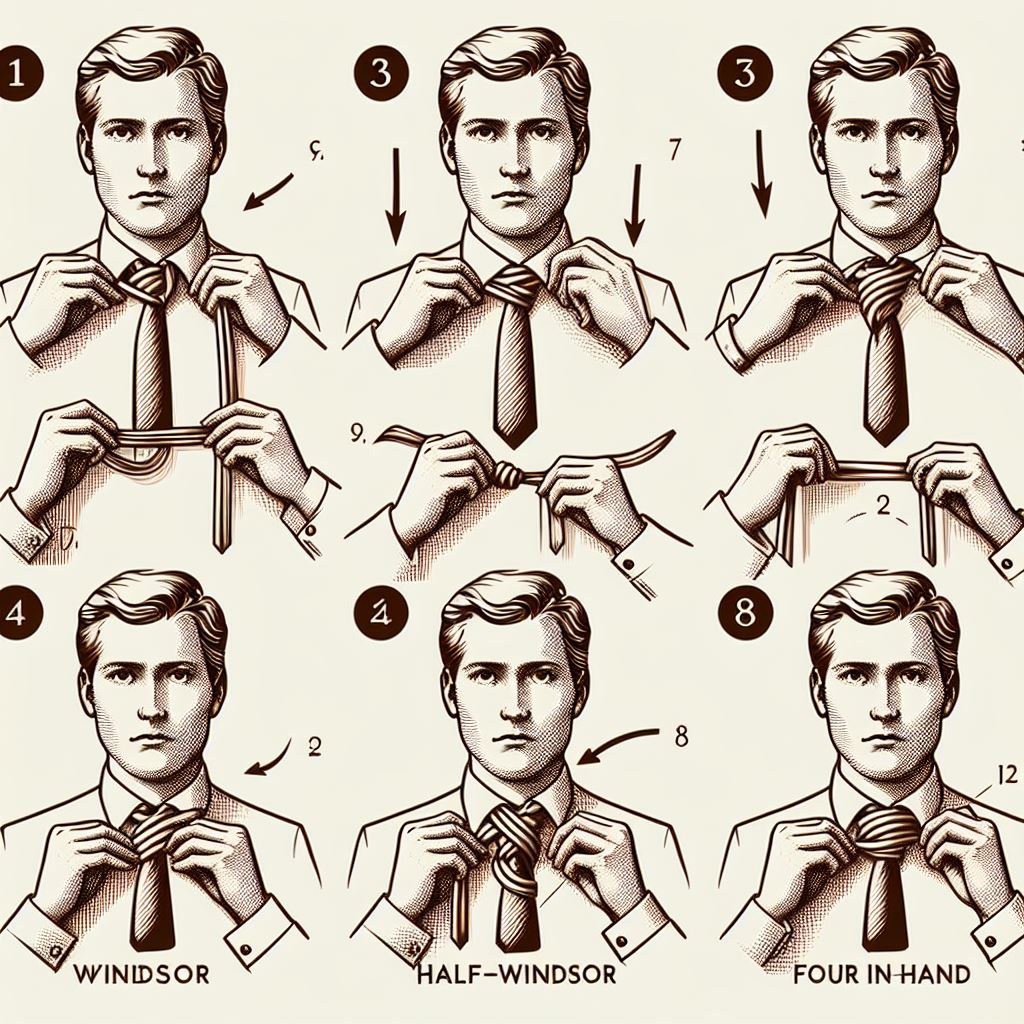The History of the Tie, How and When It Started to Be Used in Turkey, the nuances of tie usage, all tie tying methods are in this article…
Origins and Popularity of the Tie
A contestant on the game show “Who Wants to Be a Millionaire?” lost 250 billion TL by answering “French” instead of “Croatians” to the question “Which country did the tie come from?”
The tie, which has a long and controversial history, is used by approximately 650 million people worldwide today, and the number of ties sold per year exceeds 800 million. Here is the story of the tie…
The Birth and Historical Development of the Tie
Sometimes wars can lead to unexpected results. Centuries have passed since the Thirty Years’ War in the heart of Europe, which lasted from 1618 to 1648. After the war, borders and balances changed. Then things slowly settled down, life returned to normal, and the war was forgotten. If we say today that the Thirty Years’ War affects your life almost every morning, you probably won’t understand…
The birth of the tie was in 1635, during the Thirty Years’ War, among approximately 160,000 legionnaires and knights fighting for French King Louis XIII, there was a group of soldiers who could easily be distinguished from other soldiers due to a detail in their clothing. What made the Croatian soldiers different were the scarves they tied around their necks.
The Modern Position and Importance of the Tie
In the late 1960s and early 1970s, along with flower children and freedom songs, tie usage, which suffered a serious blow for representing authority and order, managed to come back into fashion with the ‘yuppies’ of the 1980s. Men who proudly carried ties around their necks like a kind of business card began to attach extraordinary importance to ties, which they saw as the flag of their status.
The 1990s seemed to be a tough period for ties. Franco Bossisia, the president of the Italian shoe giant Suparga, openly declared war on ties by stating: “Ties are useless, most men end up looking ridiculous trying to choose an interesting tie. Besides, it’s very boring and keeps you warm.” Bossia also had a claim: “In five years, no one, including the business world, will wear a tie.”
The Nuances of Ties and Characteristics of a Quality Tie
Let’s start with the characteristics of a quality tie. A classic tie with a width of 8.5 – 10 cm and a length of 140 cm should be 100% silk, which is perhaps the most important indicator of quality. Tie fabrics are divided into two: woven and printed. Although it is difficult to tie due to its thick texture, woven ties are one of the indicators of quality. The most common pattern in woven ties is known as diagonal stripes. In recent years, in addition to silk ties, quality products are also produced from blends such as wool, wool-cashmere, wool-silk-linen, or silk-linen.
The Art and Techniques of Tying a Tie
- The tie knot should be tied so that it comes to the lower edge of the pants’ belt.
- When untied, it should return to its original state.
- It should be easy to remove.
- Should not be left in damp places.
- Should never be ironed (should not be pressed during dry cleaning).
- Should not be left tied overnight.
- Knitted ties should be stored in a round shape to prevent them from stretching.
- With denim pants, a sporty model made of fabric should be preferred.
- The tie knot should not be pulled to open.
- The lining should never be visible.
- It should not match the pocket square placed in the left pocket of the jacket.
- It should always contrast with the shirt but should not be the exact opposite.
- Diagonal woven ties should not be used with suits (micro-patterned woven ties should be preferred with suits).
- Wool and cashmere ties should be used with heavy fabrics on cold days.
- Linen and linen-blend ties should only be worn in the summer and should be preferred with cotton and linen clothes.
How to tie a tie?
Tie tying styles can vary depending on the person’s preference, but there are some basic tie tying techniques. Here are the main tie tying styles and information about their origins:
Four-in-Hand: The most common and simple way to tie a tie. Its name comes from a popular male equestrian sport in 19th century England called “four-in-hand.” This tying style, referencing one of the four reins of a horse, represents the four folds of the tie.
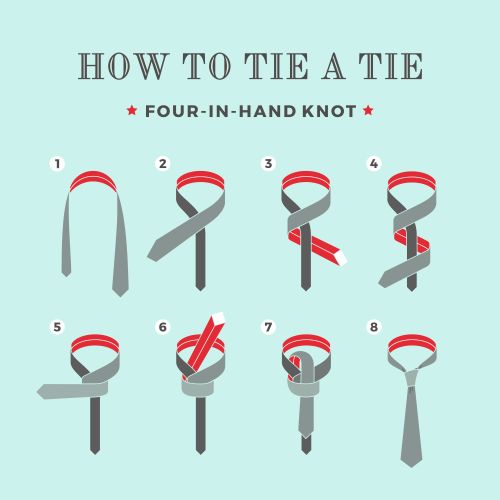
Windsor knot is a method of tying a necktie into a wide, symmetrical knot. It is named after King Edward VIII of England. The Windsor knot is said to have been inspired by Edward’s style of tying a tie.
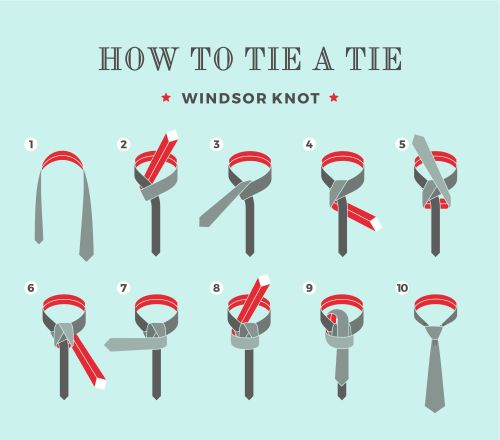
The Half-Windsor knot is similar to the Windsor knot but creates a smaller knot. It uses less tie fabric than the full Windsor and is quicker to tie.
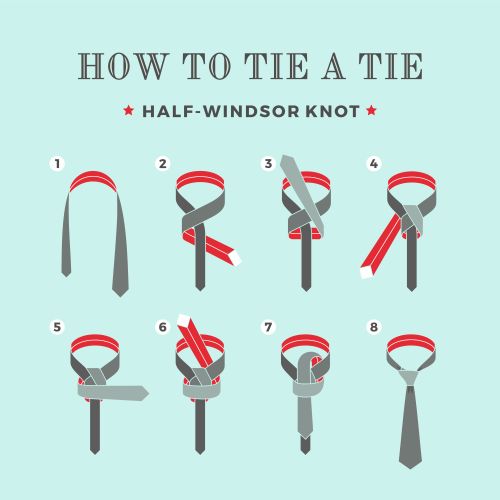
The Kelvin knot creates a rectangular knot and provides a neat appearance. It is named after the Kelvin temperature scale, as the knot is thought to resemble the zero point of the temperature scale.
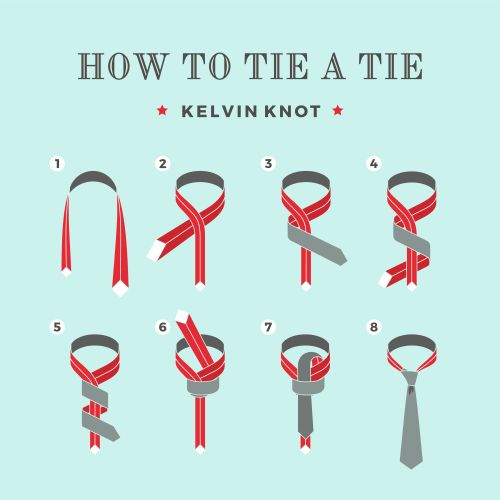
The Pratt or Shelby knot, similar to the Four-in-Hand but with a more symmetrical appearance, is named after American journalist Jerry Pratt or American actor Don Shelby, with various claims attributing the knot’s name to either of them.
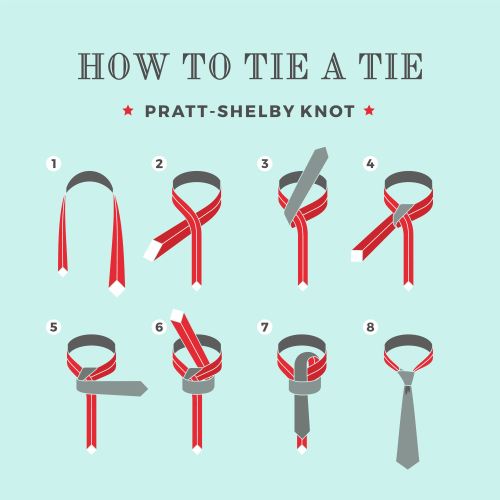
Papyon (Bow Tie): Kravat yerine fiyonk kullanmak isteyenler için popüler bir seçenektir. Tarihi çok eskilere dayanır ve genellikle resmi ve özel etkinliklerde tercih edilir.
